Thomas Kinter
Learn Russian in the European Union
Daugavpils, Latvia
Spring 2022
Recently, my friends and I were fortunate enough to visit the neighboring Baltic nation of Lithuania. Lithuania is a country of about three million people on the eastern side of the Baltic Sea. Its capital, Vilnius, is in the eastern part of the country and even closer to Daugavpils than Latvia’s capital, Riga. Together, Latvian and Lithuanian are part of what are known as the Baltic languages which I have come to learn are quite different than the Slavic languages Russian, Belarusian, and Polish that are spoken in the surrounding countries.
Early in the morning on Friday, we rode a bus that quickly crossed the border and towards our first stop in the town of Trakai. The main street of Trakai was very charming with its colorful, well-kept houses, but we soon saw what draws thousands of tourists to the small town, its castle. As an American who had never actually seen a real castle before, I was amazed to see the red Trakai castle standing alone on its island. The castle is about six hundred years old and was reconstructed in the last century to appear as it did in its prime when it was an important display of the Grand Duke of Lithuania’s power. It was easy to see why Lithuanians are so proud of it.
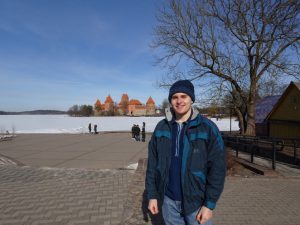 Castle in Trakai
Castle in Trakai
After Trakai, we traveled to Vilnius and got off the bus right in front of Vilnius Cathedral, which is the largest of its kind in the country and the place where the old Grand Dukes were crowned. We could also see the great hill overlooking the city where, as we were told, the Grand Duke Gediminas (who now has a statue in the Cathedral Square) first was inspired to build the city in the fourteenth century after dreaming of an iron wolf howling at its peak.
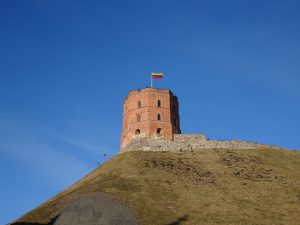
From the square we walked through the old town and saw the President’s mansion, some of the old city wall, the city hall, Vilnius’ almost 500 year old university, an artistic neighborhood that declared itself a republic in 1987, and a few of the main churches holding the remains of martyrs from the time of the official conversion of Lithuania, which was the last country in Europe to do so.
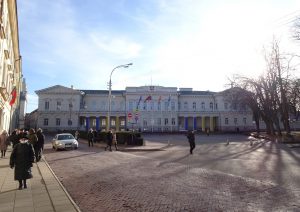
Saturday morning, we visited the Museum of Occupations and Freedom Fights in a building which served as a prison for the occupying forces of both Nazi Germany and the Soviet Union. Walking through the cells and hallways of this dreadful place forced me to think about the horror felt by the thousands who were imprisoned and murdered there and the kind of world that those in this part of the world lived in during a time that was not so far in the past.
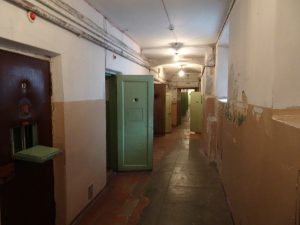
Sunday morning, we left Vilnius for Lithuania’s second largest city, Kaunas. Although we did not spend very much time there, I really enjoyed seeing the town (though the warm, sunny weather that day may have had some influence on me). While Vilnius is a city home to a large number of different national and religious groups, Kaunas is more heavily Lithuanian and has served as the capital of the country at times when Vilnius was controlled by other nations. For lunch, my friends and I were able to eat some traditional Lithuanian food (lots of potatoes and cheese) before seeing some of the city’s old castle and the river that flows down from Vilnius to the Baltic.
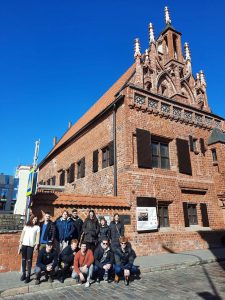
The final stop on our visit to Lithuania was the most tragic one. What is today known as the Ninth Fort was built as part of a ring of fortresses around Kaunas during the end of the nineteenth century and later served as a prison. Here we learned that during the Second World War, the fort was the site of the mass murder of tens of thousands of Jews, Lithuanians, Russians, and others whose remains now lie under the grass near a monument that marks what happened there and speaks to the better future that the country hopes for.

My trip to Lithuania taught me about some of the history, sometimes good and sometimes terrible and shocking, of the Baltics. However, it also taught me about how nice life can be as I saw people enjoying their time with their friends in the sun and as I enjoyed my time there with my own friends.